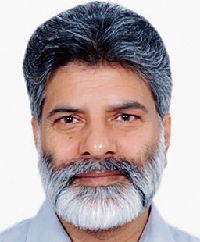To prosper again, Punjab must reinvent its institutions
The relationship between institutions and economic development has remained the focus of attention in the realm of public policy. Institutions set the rules of the game that govern the behaviour of the economic agents of production and their participation in economic activities.
The impact of institutions on economic prosperity was confirmed by the Nobel committee while awarding this year’s Sveriges Riksbank Prize in economic sciences in memory of Alfred Nobel to three economists — Daron Acemoglu, Simon Johnson and James A Robinson. This reaffirms faith in institutions and brings back focus on the issue of why some countries/regions develop and others lag. Punjab’s development story is a perfect fit as it shows its superior economic performance in the past and decline in recent times.
First, let’s understand why Punjab has been a pioneer in economic development. It was mainly due to good governance, well-functioning institutions, land reforms, huge investment in infrastructure and a good network of irrigation system. It was the first state to electrify all villages and had efficient marketing arrangements and road connectivity across all villages. It had industrial policies for generating the right kind of incentives for small-scale industries to thrive. The service sector provided efficient results and ensured peoples’ involvement in the development process. The awakened political leadership, a committed bureaucracy and an efficient law-and-order machinery used the state power to deliver development. The planning process acted as a coordinating agent to link all sectors and restore the right balance between state intervention and the market.
This resulted in a high capital formation in comparison to other states and helped Punjab’s economy record high growth rate as compared to the national growth rate and that of other states. The superior institutions led to Punjab being one of the highest per capita income states as well as an economic development model, acclaimed worldwide for reducing poverty. While providing food security, Punjab also helped the nation protect its borders.
However, the turmoil from the early eighties to the mid-nineties spoiled the well-functioning state apparatus and derailed the development process in Punjab. During these terrible years, the first to get affected and become dysfunctional was the fiscal policy of the state government. Human and physical capital started shifting to other states, adversely impacting the industrial sector and economy. The state government started borrowing funds for paying employees’ salaries and capital formation started depleting due to lack of new investments and capital flight.
Despite the subsequent revival of the democratic process as elected governments survived their full terms over the last three decades, they have failed to revive the growth momentum. Fiscal policy and policymaking institutions have turned non-functional. Their consequences include a very high level of debt burden on the state and the use of borrowings for unproductive purposes. This was because the institutions that generated incentives and disincentives for economic progress were usurped by various interest groups. These interest groups thrived by not allowing new institutions to be formed and give a freshness to the policymaking process. Hence, the economic growth decelerated. That’s how Punjab turned from a leader to a laggard state in economic development.
Punjab is a typical case of a state not changing its institutional arrangements for more than three decades. This has constrained its production system. Plus, the bandage approach to public policy has only allowed the existing system to prolong and die a slow death. Now, the question is whether there is a window of opportunity for Punjab to make its economy dynamic. Historically, Punjabis have emerged out of difficult situations and thrived, showing new paths of moving out of difficult times. They have done it while changing social and economic institutions.
It is high time the Punjab Government should work in earnest towards changing its inhibitive institutions. The right approach would be to set up an autonomous commission, whose job would be to suggest a holistic policy for coordinating all the sectors of the economy in order to generate inter-sectoral linkages and realise the economies of scale and scope. Eminent economist Nirvikar Singh has suggested that Punjab needs to make its production system dynamic while incurring a one-time ‘switching cost’.
The report of the agriculture experts’ group, released by the Punjab Government as a policy document, suffers from inherent flaws in terms of perpetuating the existing system for rent-seeking. The industrial sector policy is also perpetuating the current low-productivity-low-wage system and there is no incentive for change.
The Punjab Government has failed to develop any new thinking on public policy in the service sector. The modern service sector has not been able to take firm root nor have the services progressed enough for export. Moreover, the service sector is informal, with the unregulated private sector dominating. Thus, conditions in which the skilled workforce seek employment opportunities in other parts of the country or abroad have been created. The current phase of migration from Punjab is driven by both distress and opportunity. It is the main cause of human and financial capital drain from Punjab.
The current state government was given a huge mandate and had a massive responsibility to make Punjab’s economy, society and polity dynamic. However, it has got locked into the vicious circle of bureaucracy, which is not conducive to taking corrective measures for developing a new system of institutions that could deliver results.
The Punjab Government should involve all stakeholders and apprise them of the current realities as well as the future agenda for a progressive Punjab. Consensus should be built around new institutions that will make Punjab dynamic and vibrant again and reduce the mass migration of the younger generations. In this context, the diaspora and their experience in various foreign lands can be a handy tool to learn and introduce the right kind of institutional changes for making Punjab a developed state.









